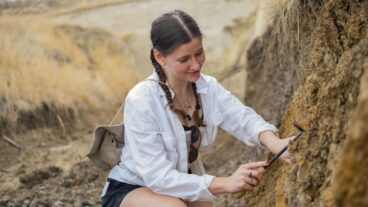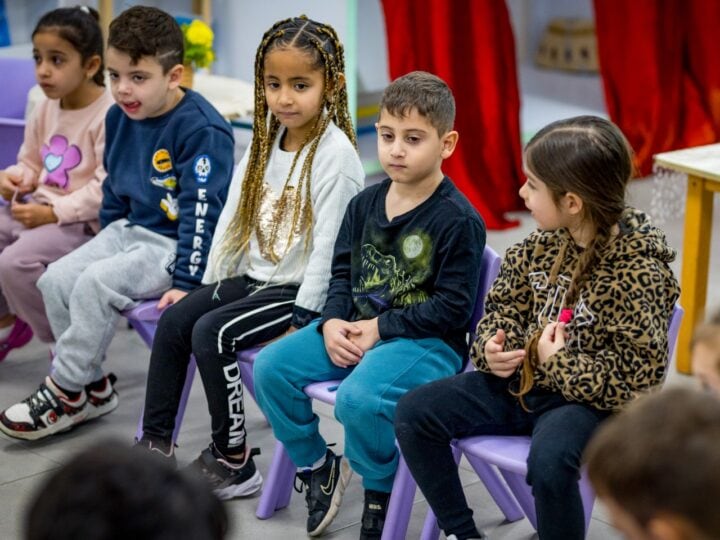For more than four decades beginning in 1951, Israel’s northern port city of Haifa hosted an annual Flower Show.
On July 1, the Haifa City Museum opened an exhibition filled with memorabilia of past Flower Shows as well as new installations of color and fragrance inviting viewers to think about how humans connect with natural beauty.
All signage is in English (as well as Hebrew and Arabic) and guided English tours are available.
Visitors entering the central exhibition hall pass through an arch of faux flowers created by designer and photographer Ori Shifrin Anavi in a spectacular variety of colors and shapes evoking the symmetries of Haifa’s famous Baha’i Gardens.
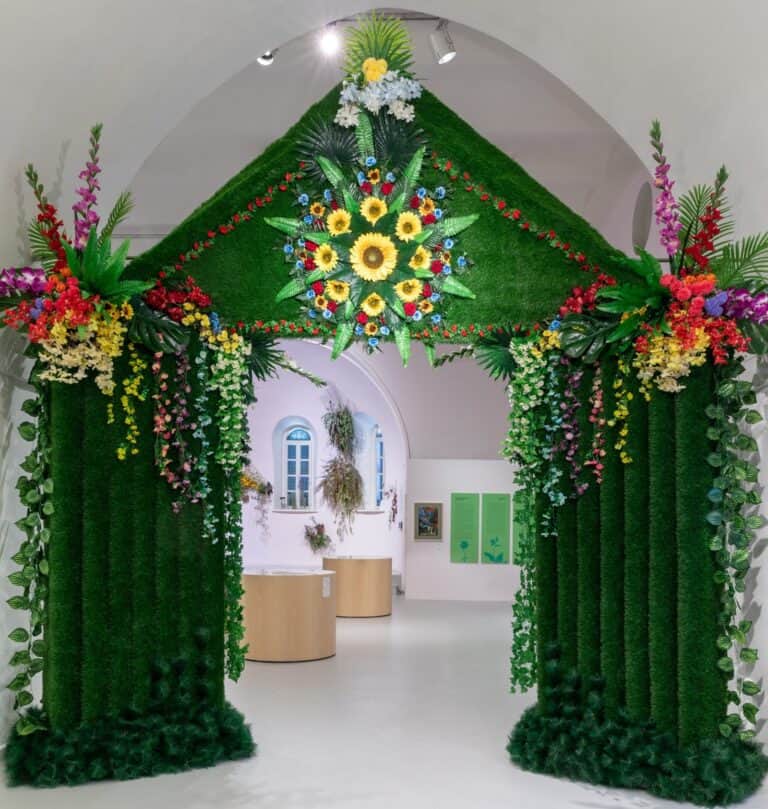
Curator Yifat Ashkenazi says the fake blooms draw attention to ethical issues in the flower industry, which often uses artificial materials to satisfy customer demand and reduce costs.
“Wilting Flowers,” a work by artist Albina (BINI) Chizik, hangs from the ceiling and walls. She began with fresh flowers that will wilt and dehydrate over the course of the show, which runs through February 3. As the flowers change their form and color, the installation will assume an entirely different character, said Ashkenazi.
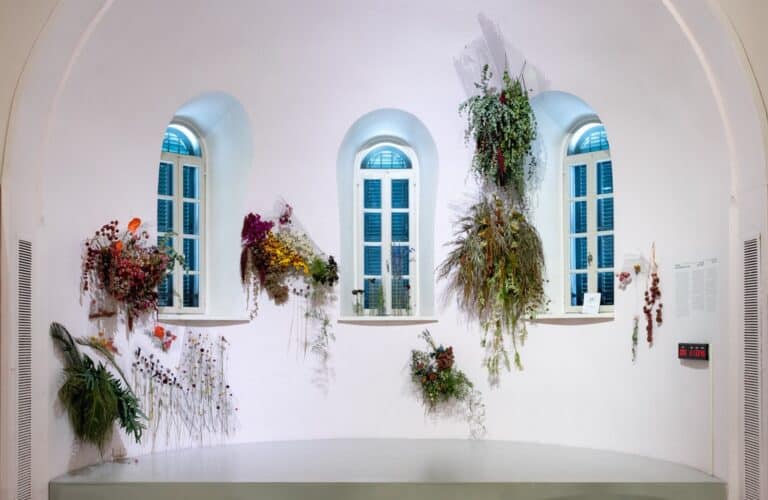
Artist Suzi Farkash knitted soft yarn flowers as a 3D takeoff on still-life paintings of flowers in vases. Both methods are trying to achieve a sort of frozen moment in time when the live blooms are at their peak.

Ashkenazi allocated separate rooms to exhibitions mounted in collaboration with Taiwan, Lithuania and Japan.
Taipei’s Economic and Cultural Office in Tel Aviv cooperated on an exhibit about a Taiwanese ethnic community, the Hakka, that celebrates the blossoming of the tung tree each May.
The Lithuanian Culture Institute invited Lithuanian artists collective Baltos Kandys (“White Moths”) to contribute a work. The collective used its space to display a mandala carpet made of felt flowers symbolizing infinity.

With the support of the Japanese Embassy in Israel, the museum offered workshops in ikebana, traditional Japanese flower arrangement, on the opening day of the exhibition.
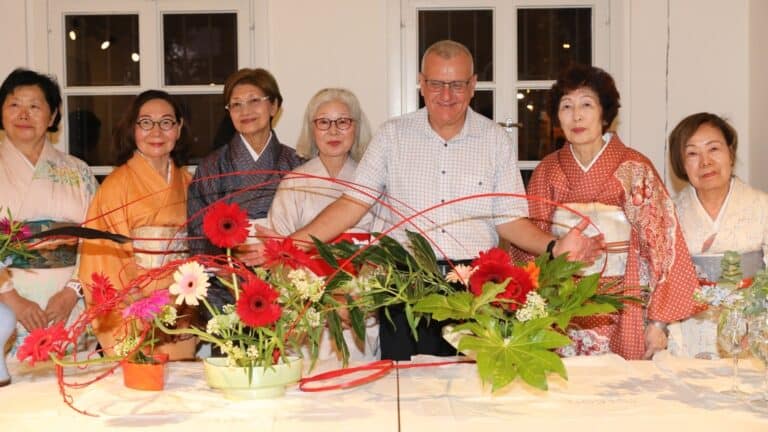
In a room assigned to the Japanese art of origami (paper-folding) vsitors can try their hand at creating four different flowers, write a wish inside them, and attach them to a tree.
Other family activities associated with the exhibition include:
- A memory game about flowers and their symbolic significance.
- A family ‘experience space’ with cushions and beanbags, children’s books and magazines dealing with flowers and nature.
- A dark room where kids can draw flowers on glow-in-the-dark tablets and learn about flowers that bloom only at night.
- A botany room where children can create felt flowers.
- A courtyard display of real flowers as well as huge wooden blossoms that can be threaded with strands of cotton threads to teach children how pollination works.
- A digital game of searching for specific flowers throughout the exhibition spaces, using your smartphone to identify and locate each specimen.

The museum is also displaying photographs by former Haifa municipal photographer Zvi Roger, documenting the Flower Show of 2012 when the municipality paid nostalgic tribute to the festival of yore with a big, bold exhibition of floral arrangements and plants contributed by florists from around the world.
Haifa City Museum is located at 11 Ben-Gurion Boulevard in the German Colony. For more information, click here.












